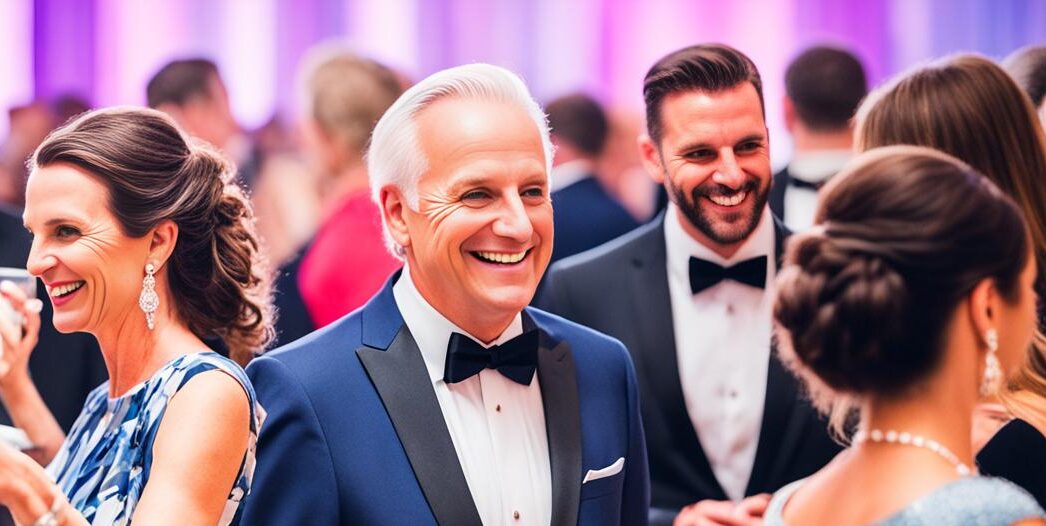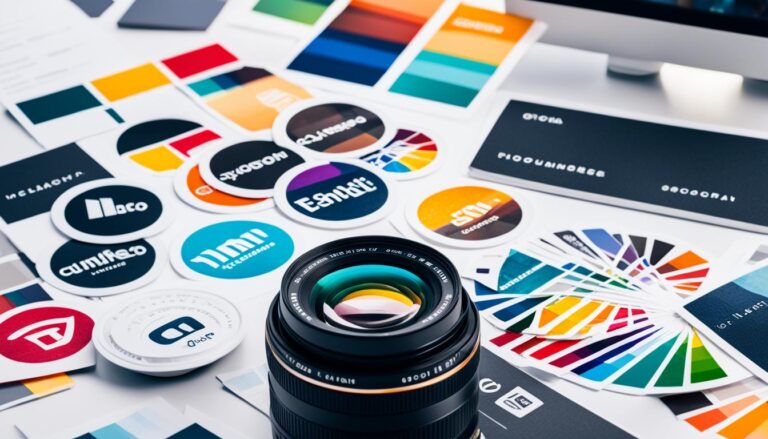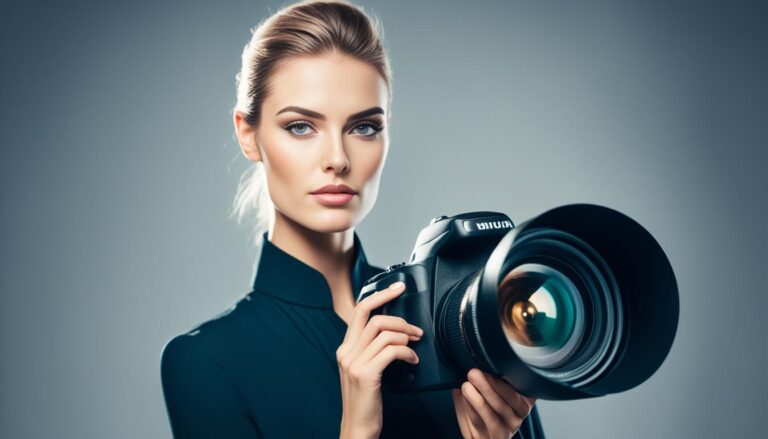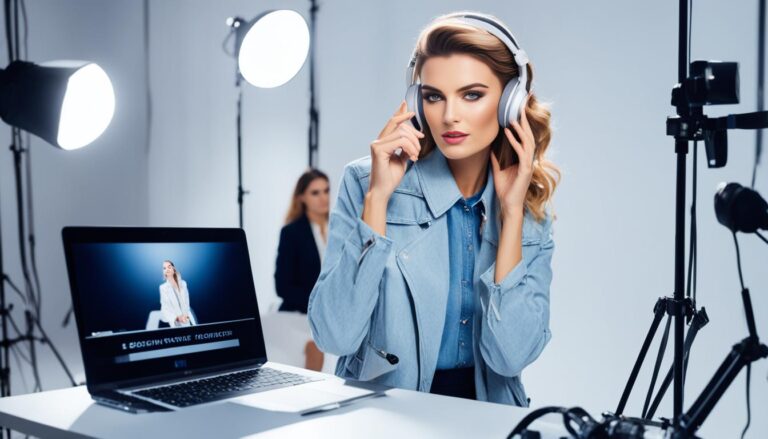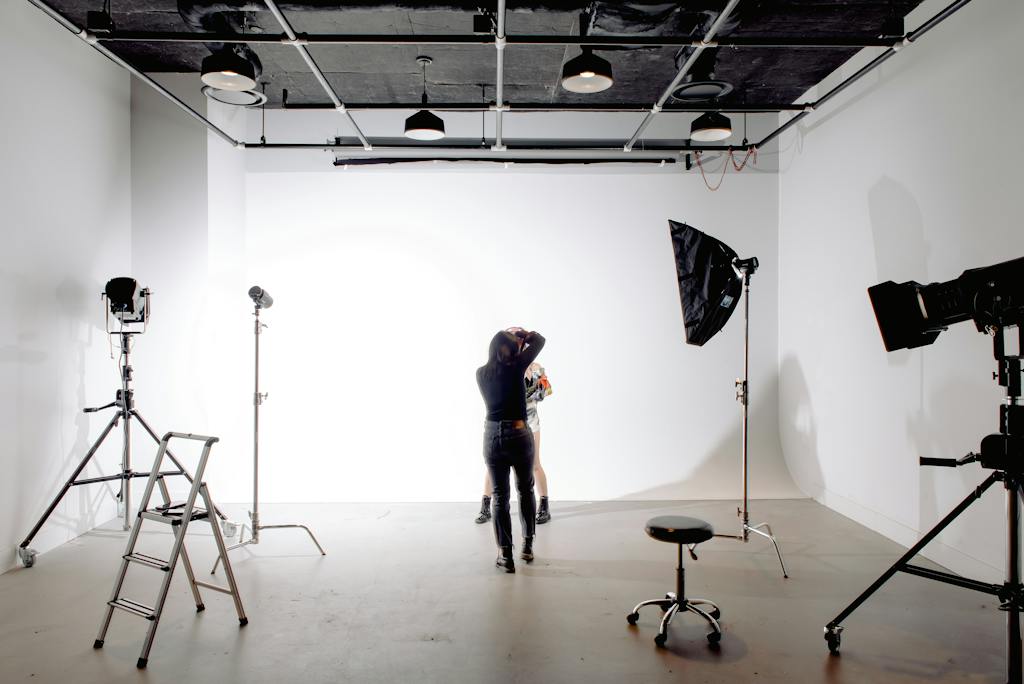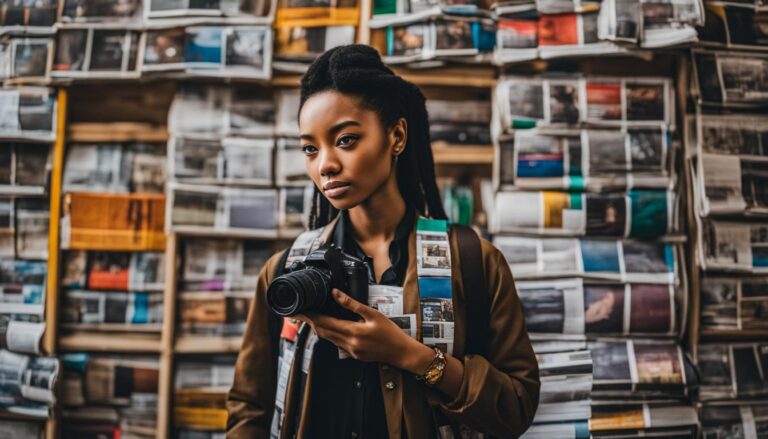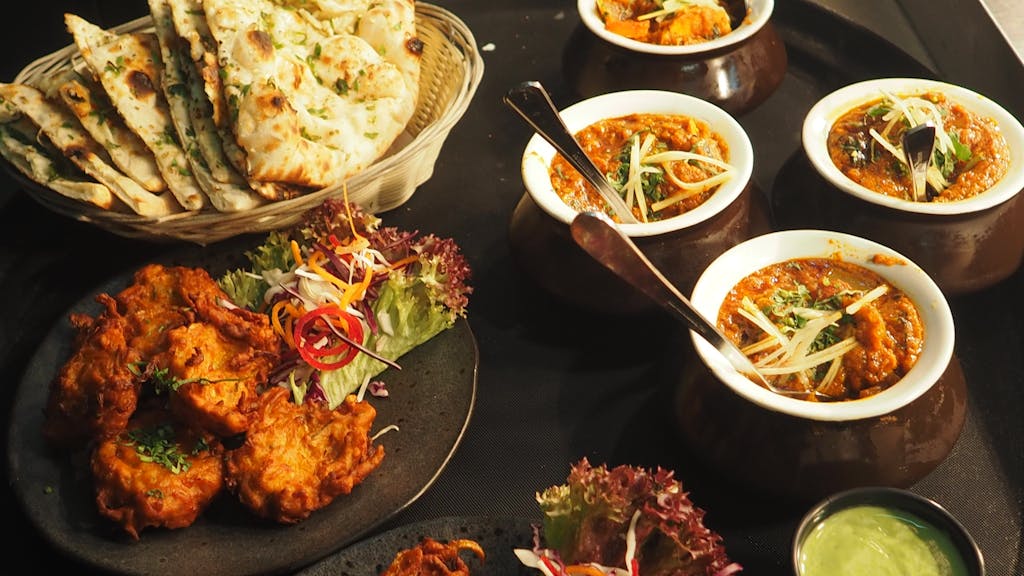How to Become an Event Photographer
Have you ever attended an event where the atmosphere was electric, and every moment seemed to encapsulate the essence of the occasion? As I stood there, capturing those precious moments on my camera, I realized the power of event photography. The way it allows us to freeze time, preserve memories, and evoke emotions is genuinely incredible.
If you’ve ever felt the same way, you might be interested in exploring a career as an event photographer. Whether you’re a beginner looking to dive into the world of event photography or an experienced photographer wanting to expand your services, this comprehensive guide is for you. We will walk you through the steps and skills required to become a successful event photographer, from understanding the role and qualities needed to building a portfolio, marketing your services, gaining experience through freelance work, and more.
Key Takeaways:
- Event photography is a rewarding career that allows you to capture the essence of special occasions.
- This comprehensive guide will provide insights and tips to help you succeed as an event photographer.
- Topics covered include understanding the role of an event photographer, developing essential skills, crafting your branding, gaining experience through freelance work, and more.
- Following the steps outlined in this guide, you can turn your passion for photography into a thriving career.
- Stay tuned for the next section, where we will delve into the role of an event photographer and the qualities required for success.
Understanding the Role of an Event Photographer
Before diving into the world of event photography, it’s important to have a clear understanding of the role and responsibilities of an event photographer. Event photography encompasses various events, including weddings, corporate conferences, award ceremonies, and more. It involves capturing compelling and memorable moments of an event, telling a story through your photos, and evoking emotions in the viewers.
Defining Event Photography
Event photography is a genre of photography that focuses on capturing moments and documenting the atmosphere of various events. It involves photographing people, activities, and details that reflect the essence of the event. Event photography aims to create visually engaging images that showcase the success and highlights of an event. Whether it’s a wedding, corporate event, or a social gathering, event photographers play a crucial role in preserving memories and creating visual narratives.
The Diverse Realms of Event Photography
Event photography covers a diverse range of events, each with its unique characteristics and requirements. Event photographers cover everyday events, including weddings, corporate conferences, trade shows, music concerts, charity events, and sports tournaments. Each type of event presents different challenges and opportunities for event photographers, from capturing candid moments and emotional interactions to documenting grand setups and high-energy performances. Understanding the specific demands of each type of event is essential for a successful event photographer.
Key Qualities of a Successful Event Photographer
Being a successful event photographer requires more than just technical skills and equipment. It also requires certain qualities and characteristics that set you apart from the competition. Some essential qualities of a successful event photographer include adaptability, creativity, great interpersonal skills, attention to detail, and the ability to work under pressure. This section will explore these qualities and how they contribute to your success as an event photographer.
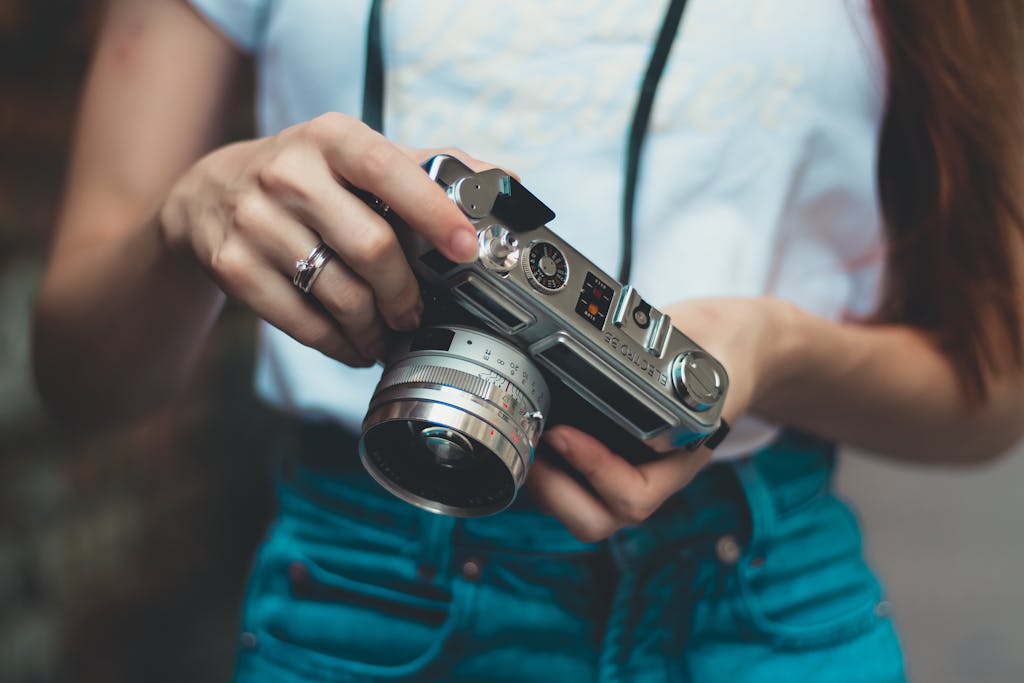
Developing the Essential Skills
To excel as an event photographer, developing essential skills to enhance your photography and set you apart from others is crucial. These skills include technical proficiency with camera equipment, composing and capturing compelling photos, and adaptability to variable event environments. This section will discuss these skills in detail and provide tips and techniques to help you master them.
Technical Proficiency with Camera Equipment
Technical proficiency with camera equipment is essential for any photographer, and event photography is no exception. Understanding your camera and its settings, using different lenses and accessories, and navigating through various shooting modes are all fundamental for capturing high-quality event photos.
By improving your technical proficiency, you can confidently handle your photography equipment and maximize its potential in various event settings. Whether adjusting your camera’s exposure settings in low-light conditions or selecting the appropriate lens for a specific shot, having a strong technical foundation will significantly enhance your ability to capture stunning event photos.

Composing and Capturing Compelling Photos
Great event photographers are distinguished by their ability to compose and capture compelling photos. Composition techniques, such as the rule of thirds, leading lines, and framing, can significantly enhance the visual impact of their photos and draw the viewer’s attention to the subject.
Understanding composition, lighting, timing, and perspective is crucial for creating compelling event photos. By mastering these aspects, you’ll be able to capture the essence and emotion of the event, telling a visual story that resonates with viewers.
Adapting to Variable Event Environments
Event photographers often find themselves in variable and unpredictable environments, from dimly lit ballrooms to brightly lit outdoor spaces. Adapting to these different environments is crucial for capturing high-quality photos.
Adaptability involves adjusting your camera settings, effectively utilizing natural and artificial lighting, and being prepared for unexpected challenges that may arise during an event. By mastering the art of adaptation, you’ll consistently deliver great photos regardless of the environment.
The Business Aspect: Becoming a Business Entity
Becoming a successful event photographer goes beyond mastering photography skills. It also requires a solid understanding of the business aspect of running a photography business. Establishing yourself as a professional brand is essential to attract clients and stand out in the industry. This section will explore the importance of crafting your personal branding and establishing a professional presence.
Crafting Your Branding
Personal branding is crucial in showcasing your unique identity as an event photographer. It involves defining your unique selling proposition, determining your target audience, and developing a consistent visual and verbal identity. Crafting a strong personal brand will help you differentiate yourself from competitors and attract the right clients.
To craft your branding effectively, identify your strengths, values, and unique style as a photographer. Consider what sets you apart and makes you the ideal choice for potential clients. Use this information to create a compelling brand story and visual identity that aligns with your photography style and resonates with your target audience.
When developing your visual identity, choose a consistent colour palette, typography, and logo that reflect your brand’s personality. These elements should be used across your website, portfolio, and promotional materials to create a cohesive and professional impression.
Additionally, pay attention to your verbal identity by ensuring your messaging and tone of voice align with your brand values. Clearly articulate what makes your photography services unique and how you can provide value to your clients. Authenticity and clear communication are key to building trust and credibility with potential clients.
Establishing a Professional Presence

In today’s digital age, establishing a professional online presence is crucial for event photographers. It allows you to showcase your work, connect with clients, and build a reputation in the industry. Here are some essential steps to establish a professional presence:
- Create a professional website: Design a clean and user-friendly website that showcases your portfolio, shares information about your services, and provides an easy way for potential clients to contact you. Remember to optimize your website for search engines to improve your online visibility.
- Utilize social media platforms: Select platforms that align with your target audience and photography style. Share your work regularly, engage with followers, and build a community around your brand.
- Build an online portfolio: Use platforms such as Behance, Flickr, or your website to create an online portfolio that showcases your best work. Make sure to curate your portfolio to highlight your expertise in event photography.
- Network with industry professionals: Attend photography events, workshops, and conferences to connect with other professionals. Building relationships with event planners, fellow photographers, and potential clients can lead to collaborations and referrals.
Establishing a professional presence increases your visibility and demonstrates your commitment to your craft. Consistently updating your online presence with high-quality work and engaging with the photography community will help you attract clients and establish yourself as a reputable event photographer.
Creating an Impressive Photography Portfolio
A photography portfolio is crucial for event photographers to showcase their work and attract potential clients. A well-curated and impressive portfolio can effectively demonstrate your skills, style, and expertise in event photography. Here, I will discuss how to create an impressive portfolio highlighting your strengths as an event photographer and providing tips on selecting and showcasing your best work.
When creating a photography portfolio, the key is to curate a selection of your best work that represents your unique style and capabilities. Start by carefully selecting a diverse range of images that showcase your technical skills, creativity, and ability to capture the essence of different events. Include various events, such as weddings, corporate conferences, and social gatherings, to demonstrate your versatility as an event photographer.
To make your portfolio visually appealing and engaging, consider the following tips:
- Select high-quality images: Choose sharp, well-exposed, and adequately composed images. Avoid including subpar or mediocre shots.
- Showcase your storytelling abilities: Include photos that tell a compelling story and evoke emotions. Focus on capturing moments that reflect the event’s atmosphere, energy, and emotions.
- Highlight your technical skills: Include images demonstrating your technical proficiency, such as using different camera settings, lighting techniques, and creative compositions.
- Consider the flow and organization: Arrange your images logically and aesthetically pleasingly. To create a coherent narrative, pay attention to the sequence and transitions between photos.
- Include relevant details: Provide brief descriptions or captions for each image to provide context and highlight any unique aspects or challenges of the event.
Remember, your photography portfolio should showcase your technical abilities and reflect your artistic vision and style. It’s an opportunity to demonstrate your creativity, storytelling prowess, and ability to capture the essence of different events. Consider curating a portfolio that truly represents your strengths as an event photographer.
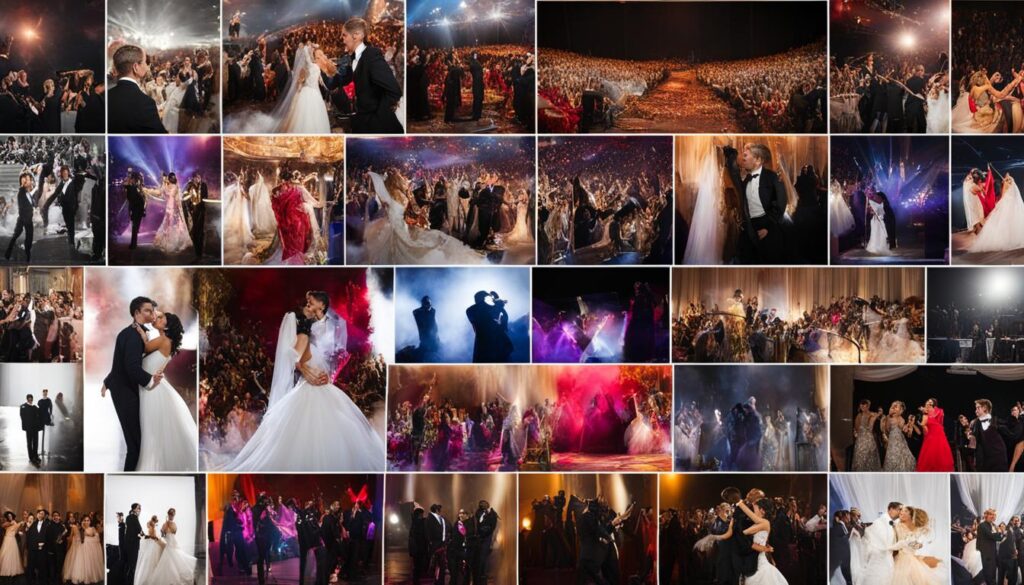
A visually appealing and well-curated photography portfolio can capture the attention of potential clients and set you apart as an event photographer. Use these tips to select and showcase your best work, highlighting your skills, style, and expertise.
Marketing Strategies for Event Photographers
Marketing is a vital component of building a successful event photography business. Attracting clients and growing your business can be challenging without effective marketing strategies. This section will explore various marketing strategies tailored explicitly for event photographers. These strategies will help you promote your services and stand out in a competitive market.
One effective marketing strategy for event photographers is online advertising. Social media and search engine advertising platforms can help you reach a wider audience and increase your visibility. Creating compelling ads showcasing your work and targeting specific demographics can increase brand awareness and generate leads.
Networking is another powerful marketing strategy for event photographers. Building connections within the industry can lead to valuable opportunities, referrals, and partnerships. Attend industry events, join photography communities, and engage with fellow professionals to expand your network. You can attract clients and gain credibility by establishing genuine relationships and showcasing your expertise.
Client referrals are an effective way to market your event photography services. Providing exceptional service and high-quality photos can lead to satisfied clients willing to recommend your services to others. Encourage your clients to share their positive experiences and offer incentives for referrals. This word-of-mouth marketing can significantly contribute to the growth of your business.
In addition to these strategies, having a professional and user-friendly website that showcases your portfolio and services is essential. Invest in search engine optimization (SEO) techniques to improve your website’s visibility in search engine results and attract organic traffic.
Regularly update your portfolio with your best work to showcase your skills and attract potential clients. Engage with your audience through blog posts or newsletters to provide valuable insights and maintain a strong online presence. Utilize email marketing campaigns to reach out to past clients and keep them informed about your latest offers and services.
To summarize, marketing strategies play a crucial role in the success of event photographers. You can successfully promote your services and grow your event photography business by implementing online advertising, networking, client referrals, and maintaining a strong online presence.
How to Become an Event Photographer: Gaining Experience Through Freelance Work
Gaining experience is essential for aspiring event photographers, and freelance work is a great way to start. Freelancing allows you to explore different types of events, build your portfolio, and develop relationships with event organizers and media outlets.
Starting with Freelancing
Starting out freelancing as an event photographer can be challenging yet rewarding. It involves building a strong portfolio, networking with event organizers and media outlets, and continuously improving your skills.
To start your freelance journey, focus on the following steps:
- Build a strong portfolio: Invest time in creating a diverse portfolio showcasing your event photography skills. Include various events, such as weddings, corporate conferences, and social gatherings, to demonstrate your versatility.
- Market your services: Establish an online presence through a professional website and social media platforms. Utilize these platforms to showcase your portfolio, interact with potential clients, and promote your services.
- Network with event organizers: Attend industry events, join relevant professional associations, and actively engage with event organizers. Building relationships with event organizers can lead to valuable freelance opportunities and referrals.
- Secure freelance gigs: Contact event organizers and offer your services as a freelance event photographer. Be proactive in seeking opportunities, and be prepared to negotiate your rates and deliver high-quality results.
Building Relationships with Event Organizers and Media Outlets
Building relationships with event organizers and media outlets is crucial for securing freelance gigs and establishing yourself as a reputable event photographer. Here are strategies to consider:
- Attend industry events: Participate in conferences, trade shows, and networking events where event organizers gather. Be approachable, showcase your portfolio, and engage in meaningful conversations to build connections.
- Utilize social media platforms: Establish a strong presence to connect with event organizers and media outlets. Please share your work, engage with their content, and contribute valuable insights to establish yourself as a trusted professional.
- Reach out directly: Don’t hesitate to contact event organizers and media outlets directly to introduce yourself and express your interest in collaborating. Provide relevant examples of your work and demonstrate your understanding of their events or publications.
Building relationships and securing freelance gigs can help you gain valuable experience, expand your network, and enhance your reputation as an event photographer.
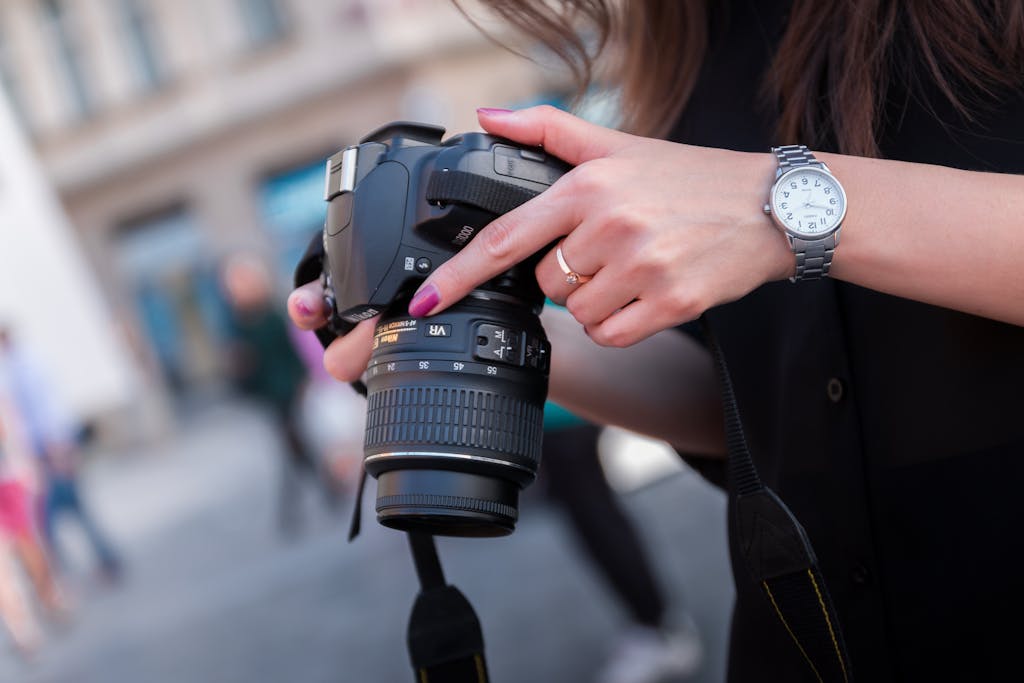
Investing in the Right Photography Equipment
As an event photographer, investing in the right photography equipment is crucial for delivering high-quality photos to impress your clients and set you apart. The right tools can significantly enhance your photography, allowing you to capture every detail and moment of the event with precision and clarity. Each piece is vital in achieving outstanding results, from camera bodies to lenses, lighting equipment, and accessories.
Choosing a camera body that meets the specific requirements of event photography is essential. Look for a camera with a high resolution and low-light performance, as these factors are particularly important in capturing dynamic and well-exposed images in various lighting conditions. Consider investing in a full-frame camera for its exceptional image quality and versatility.
Lenses are another essential part of a photographer’s toolkit. A versatile lens with a medium focal length, such as a 24-70mm or 24-105mm lens, is highly recommended for event photography. This lens lets you capture wide-angle shots and close-up details, making it suitable for various shooting scenarios. Additionally, investing in a prime lens with a wide aperture, such as a 50mm f/1.8 lens, can help you achieve beautiful bokeh and low-light performance.
In addition to camera bodies and lenses, lighting equipment is crucial for event photography, especially when lighting conditions may be challenging. Consider investing in a reliable external flash and diffuser to capture well-lit and adequately exposed photos, even in dimly lit venues or outdoor nighttime events. Additionally, having a reflector on hand can help you manipulate and enhance natural light when shooting outdoors.
Finally, don’t forget about accessories that enhance your workflow and overall photography experience. A sturdy tripod can be incredibly useful for capturing sharp and steady shots, particularly during long exposures or group shots. A comfortable camera bag or backpack will protect your equipment and make it easier to carry during long hours of shooting.
To make informed decisions when investing in photography equipment, consider your specific needs, shooting style, and the types of events you primarily photograph. Conduct thorough research, read reviews, and seek advice from experienced photographers to ensure you make the right choices. Remember, investing in high-quality equipment is an investment in your craft and will pay off in the long run.
By carefully selecting and investing in the right photography equipment, you’ll be equipped with the tools to deliver stunning event photos that will leave a lasting impression on your clients and audience. Remember that the right equipment is only one piece of the puzzle. It’s also important to continue honing your skills, staying updated with the latest trends and techniques, and consistently providing excellent service to your clients. With the right equipment and a passion for your craft, you’ll be well on your way to a successful career as an event photographer.
Pricing Your Photography Services Competitively
Pricing your photography services competitively is crucial to running a successful event photography business. Setting the right rates can attract clients, cover expenses, and ensure a sustainable income.
When determining the pricing for your services as an event photographer, it’s essential to consider various factors:
- Your experience: The level of experience you have as an event photographer plays a significant role in pricing your services. Clients often value photographers with a proven track record and extensive portfolio of successful events.
- The type and size of the event: Different events have different requirements and demands. Prices can vary based on the event’s complexity, duration, and scale. High-profile events or those requiring specialized skills may warrant higher rates.
- Industry standards: It’s essential to research and understand the prevailing industry rates in your area. This will help you align your pricing with market expectations and remain competitive.
Maximizing your earning potential as an event photographer involves finding a balance between attracting clients and ensuring you’re compensated fairly for your expertise and time. Setting rates that reflect the value you provide while remaining competitive within the market is essential.
Mastering the Art of Directing and Interacting with Event Attendees
As an event photographer, the ability to direct and interact with event attendees is essential for capturing compelling and natural shots. Whether I’m directing group shots, capturing candid moments, or handling the unpredictability of events, mastering the art of directing and interacting can significantly enhance my event photography. This section will discuss specific techniques and strategies for directing and interacting with event attendees to ensure I capture the event’s key moments and unique energy.
Directing Group Shots and Candid Moments
Directing group shots and capturing candid moments are two important aspects of event photography. Group shots require organization and clear direction to ensure everyone is included and positioned correctly. I can capture cohesive and visually appealing group photos by communicating my vision and guiding attendees. I may need to arrange people, instruct them on where to stand or how to pose, and ensure everyone feels comfortable and engaged. This creates a sense of unity and captures the essence of the event.
Capturing candid moments, on the other hand, requires a more subtle approach to capture natural and authentic interactions. It’s about observing the event and anticipating moments that evoke emotions or tell a story. By blending into the background and building rapport with attendees, I can document genuine expressions and fleeting moments that truly reflect the energy and essence of the event. These candid shots add depth and authenticity to the overall event photography.
Handling the Unpredictability of Events
Events are often unpredictable, with last-minute changes, unexpected weather conditions, and challenging lighting. As an event photographer, it’s crucial to be prepared for these challenges and have strategies to handle the unpredictability of events. Flexibility and adaptability are key traits for navigating unforeseen circumstances.
I have to be ready to adjust my shooting approach and settings based on the changing environment. This includes adapting to different lighting conditions, using different angles and perspectives, and making quick decisions on the spot. I can overcome challenges and capture critical moments even in challenging situations by staying calm and confident.
Having backup equipment, such as extra batteries and memory cards, is also essential to handle any unforeseen technical issues. Being proactive and prepared for unexpected scenarios ensures I can continue capturing high-quality photos and delivering exceptional results.
Mastering directing and interacting with event attendees is a continuous learning process. By honing my skills in directing group shots, capturing candid moments, and handling the unpredictability of events, I can elevate my event photography to new heights. These techniques allow me to capture the essence and energy of each event, resulting in memorable and impactful photographs that truly reflect the atmosphere and emotions of the occasion.
Networking and Building Connections in the Industry
Networking and building connections in the event photography industry are crucial for career growth and securing opportunities. As an event photographer, establishing industry connections can open doors to collaboration, referrals, and new clients. In this section, I will discuss the importance of networking and provide tips on effectively connecting with industry professionals, event organizers, and potential clients.
One of the best ways to network in the event photography industry is to attend industry events such as trade shows, conferences, and photography workshops. These events provide a platform to meet fellow photographers, industry experts, and potential clients. Bring your business cards and engage in meaningful conversations to build connections that lead to future collaborations or referrals.
In addition to offline networking, utilizing social media platforms is essential for expanding your network and increasing your visibility as an event photographer. Engage in photography-related groups and communities, share your work, and actively participate in discussions. This can help you connect with fellow photographers, event organizers, and potential clients who may be looking for event photography services.
Establishing collaborative partnerships is another effective networking strategy. Identify complementary service providers, such as wedding planners, event coordinators, or venue owners, and propose collaborations that benefit both parties. By working together, you can expand your reach and offer more comprehensive services to clients.
Building a strong online presence through a professional website and social media profiles is crucial for networking in the digital age. Showcase your portfolio, share testimonials from satisfied clients, and regularly update your online platforms with fresh content. This will help potential clients discover your work and contact you for upcoming events.
Remember, networking is about promoting yourself, building genuine relationships and supporting others in the industry. Offer assistance, share knowledge, and be proactive in engaging with others. By building a strong network and fostering genuine connections, you can position yourself as a trusted professional in the event photography industry.
Now, let’s take a look at an image that exemplifies the power of networking in the event photography industry:
This image shows a group of event photographers engaged in a networking session at an industry event. This visual representation highlights networking and building connections in the event photography industry. By interacting with fellow professionals and expanding your network, you can gain valuable insights and advice and open doors to new opportunities and collaborations.
Conclusion
In conclusion, becoming an event photographer requires combining technical skills, creative vision, and business acumen. As an event photographer, I understand the importance of capturing memorable moments that tell a story and evoke emotions. Through my journey, I have discovered that developing essential skills, such as technical proficiency with camera equipment and the ability to compose compelling photos, is crucial for delivering high-quality event photography. Additionally, crafting a strong personal brand and establishing a professional presence online has helped me attract clients and stand out in a competitive market.
Gaining experience through freelance work has been instrumental in my growth as an event photographer. By building relationships with event organizers and media outlets, I have secured valuable freelance gigs that have allowed me to expand my portfolio and explore a diverse range of events. Investing in the right photography equipment has also been essential, enabling me to adapt to variable event environments and consistently deliver great photos.
Mastering the art of directing and interacting with event attendees has been crucial for capturing the essence and energy of events. Whether directing group shots, capturing candid moments, or handling the unpredictability of events, honing these skills has allowed me to create engaging visual narratives. Networking and building connections in the industry have also played a significant role in my career as an event photographer, providing opportunities for growth, collaboration, and increased visibility.
As I progress as an event photographer, I understand the importance of continuous learning and adaptation. The event photography industry is ever-evolving, and staying up-to-date with the latest trends, techniques, and technology is crucial for success. By remaining passionate, dedicated, and strategic in my approach, I am confident that I can thrive as an event photographer and continue to capture memorable moments for clients and attendees alike.
FAQ’s
Q: What are the steps for getting started in event photography?
A: To get started in event photography, you can begin by practising photography, familiarizing yourself with your equipment, creating a shot list for events, building a portfolio, networking with potential clients, and determining your pricing structure.
Q: What are the different types of event photography one can specialize in?
A: Some different types of event photography include wedding photography, corporate event photography, private event photography, and many more. Specializing in a particular type of event photography can help you market your services more effectively.
Q: How can I become a professional event photographer?
A: To become a professional event photographer, you must hone your photography skills, invest in quality equipment such as zoom lenses, build a strong portfolio showcasing your event photos, market your photography business effectively, and provide excellent customer service to your clients.
Q: What is a shot list in event photography?
A: A shot list in event photography lists specific shots you plan to capture during an event. It helps ensure you don’t miss any important moments and can guide you to deliver high-quality event photos to your clients.
Q: How should I price my event photography services?
A: Event photography pricing can vary based on factors such as the type of event, the duration of coverage, the number of photos included, and your experience level. It’s important to research market rates, consider your expenses, and price your services competitively.
Q: What equipment is essential for event photography?
A: Essential equipment for event photography includes a digital camera, zoom lenses for versatile shooting options, external flash for low-light conditions, spare batteries, memory cards, and a tripod for stable shots. Editing software like Lightroom can also be helpful for post-processing your photos.
Q: Why is it essential to have a professional event photography portfolio?
A: A professional event photography portfolio showcases your skills, style, and previous work to potential clients. It can help you land new projects, demonstrate your expertise in capturing events, and differentiate yourself from other photographers in the industry.


